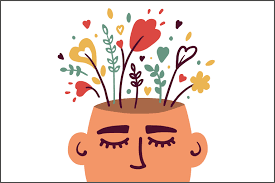In today’s fast-paced world, the concept of mindfulness has gained a lot of attention. Many people practice mindfulness to relieve stress, improve their mental well-being, and achieve a sense of inner peace. But what exactly is mindfulness, and how can it benefit us? In this blog post, we will explore the meaning of mindfulness, its benefits, and how to practice it.

What is mindfulness?
Mindfulness is the practice of being fully present in the moment and non-judgmentally observing one’s thoughts, feelings, and physical sensations. It involves being aware of the present moment without distraction or judgment. Mindfulness is not about trying to empty one’s mind or stop thinking altogether. Instead, it is about becoming more aware of one’s thoughts and feelings and accepting them without judgment.
Benefits of mindfulness:
- Reduces stress and anxiety: Practicing mindfulness can help reduce stress and anxiety by helping individuals become more aware of their thoughts and feelings. This awareness allows people to respond to stressful situations in a more effective manner, reducing the negative impact of stress on their mental and physical well-being.
- Improves focus and concentration: Mindfulness can help improve focus and concentration by training the mind to stay in the present moment. This can be particularly helpful for individuals who struggle with distractions and find it difficult to stay focused on a task.
- Enhances emotional regulation: Mindfulness can help individuals regulate their emotions by improving their ability to recognize and understand their emotions. This can lead to better self-control and fewer impulsive behaviors.
- Boosts overall well-being: Mindfulness can help improve overall well-being by promoting a sense of calm, inner peace, and happiness. It can also improve relationships by increasing empathy and compassion for others.
How to practice mindfulness:
- Start with simple exercises: Begin by practicing simple mindfulness exercises like deep breathing or body scanning. These exercises can help you become more aware of your body and the present moment.
- Set aside time for practice: Set aside time each day for mindfulness practice. This can be as little as five minutes or as much as an hour, depending on your schedule and preferences.
- Use guided meditations: Guided meditations can be helpful for beginners who may find it difficult to quiet their minds on their own. There are many apps and online resources that offer guided meditations for free.
- Practice mindfulness in daily life: Try to bring mindfulness into your daily life by being present in the moment and paying attention to your thoughts and feelings. You can practice mindfulness while walking, eating, or even washing dishes.
Conclusion:
Mindfulness is a powerful tool that can help improve mental and physical well-being. By practicing mindfulness, individuals can reduce stress and anxiety, improve focus and concentration, enhance emotional regulation, and boost overall well-being. It is a simple yet effective practice that anyone can incorporate into their daily routine with a little bit of effort and consistency.
